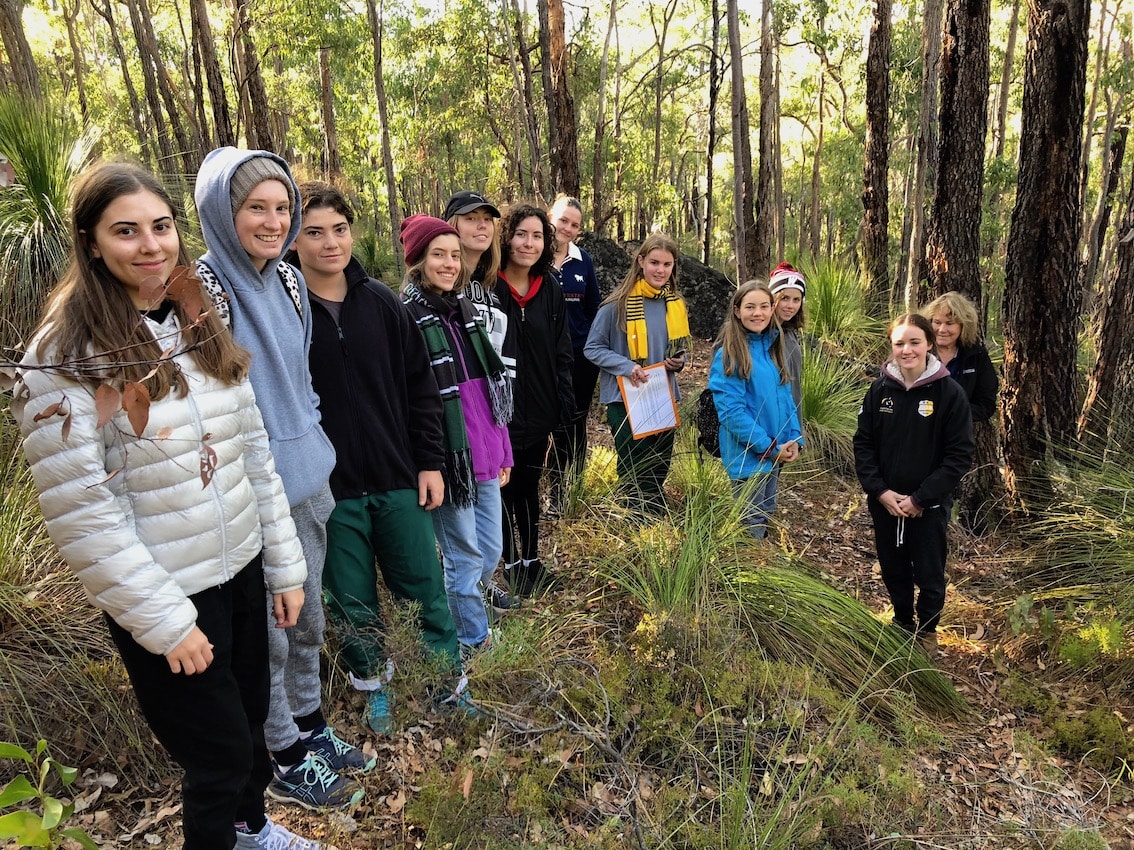 Last week, the Year 11 Biology class spent two days conducting fieldwork in the Perth Hills. The camp provided students with a variety of hands-on activities allowing the students to study the jarrah forest ecosystem. They used biological field techniques to collect and collate data about the forest, participated in animal trapping and tagging and learnt about the ethical practices of handling animals in order to satisfy fieldwork components of the curriculum.
Last week, the Year 11 Biology class spent two days conducting fieldwork in the Perth Hills. The camp provided students with a variety of hands-on activities allowing the students to study the jarrah forest ecosystem. They used biological field techniques to collect and collate data about the forest, participated in animal trapping and tagging and learnt about the ethical practices of handling animals in order to satisfy fieldwork components of the curriculum. Alexia Jurkowski
Alexia Jurkowski Kate Ciraolo
Kate Ciraolo Kaarakin Black Cockatoo Conservation Centre.
Kaarakin Black Cockatoo Conservation Centre.
Did you know, it takes approximately 500 years for a Jarrah tree to be fully mature, which is a problem throughout the Jarrah forest, as many of the native trees were cut down? This affected the animal habitats as many of them lived in the deep hollows of the trees.
The camp itself enlightened and enriched my interest in the fauna side of biology. During both the raptor and rescue species encounters, I was really interested and amazed by the number of threats that we as a human race are causing towards the different organisms. I also found the visit to the Kaarakin Black Cockatoo Conservation Centre a very interesting place. Learning especially about the dingos, and the laws that the government were changing towards them. It definitely has sparked a passion for me. Eloise Davis Olivia Gumina
Olivia Gumina I thoroughly enjoyed the experiences of the Biology camp. It has made me consider following a similar volunteering career to those at the Kaarakin Black Cockatoo Conservation Centre, as well as possibly studying conservation and wildlife at university to follow a similar career as the women we talked to and worked with.
I thoroughly enjoyed the experiences of the Biology camp. It has made me consider following a similar volunteering career to those at the Kaarakin Black Cockatoo Conservation Centre, as well as possibly studying conservation and wildlife at university to follow a similar career as the women we talked to and worked with.
I really enjoyed walking through the forest in general and just being able to wander around in the forest, I enjoyed the camping experience of it as well and wish to camp more in future. I also loved the animal encounters and visiting the volunteer centre. Caitlin Milne











